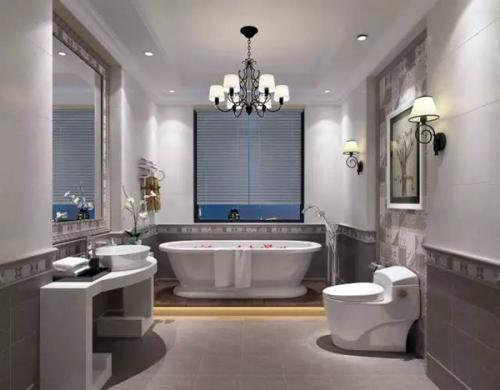Effective methods for controlling indoor decoration pollution
Indoor decoration pollution is a newly emerging environmental pollution. Simply put, indoor decoration pollution refers to the pollution caused by the decoration process on the indoor environment. It is a new pollution that has emerged in the process of decorating indoor spaces with the improvement of people's living standards, mainly due to the use of unqualified decoration materials and unreasonable planning in the indoor decoration process.
According to the types of pollutants, they can be divided into formaldehyde pollution, benzene pollution, ammonia pollution, radon pollution, and lead pollution. These pollutants mainly target indoor air pollution, which is invisible and intangible. They mix in the air and enter the human body through the respiratory tract, causing various adverse effects on the human body. It is reported that indoor air pollutants such as radon, benzene, formaldehyde, ammonia, and trichloroethylene can cause 35.7% of respiratory diseases in the human body, 22% of chronic lung disease, and 15% of bronchitis, bronchitis, and lung cancer. It causes harm to multiple systems, organs, tissues, cells, and genes. Therefore, in order to prevent damage from indoor decoration pollution, when selecting decoration materials, it is necessary to prevent the use of materials containing harmful substances and choose building materials that meet the standards
Decorative deodorant is a type of substance used to differentiate and eliminate formaldehyde, benzenes, ammonia, and other pollutants that occur during the process of house decoration Products containing harmful substances such as TVOC; Its form is a powder, which needs to be mixed with water to form a light yellow liquid. It is generally used 1-3 times according to the degree of decorative pollution and the characteristics of the pollutants. The application cycle is once every week. After the colored liquid reacts with harmful substances in the air, the liquid becomes clear, indicating that its efficacy is ineffective and can be discarded. It is generally recommended that people do not use it indoors or during the day when going out, as it has a certain stimulating odor.

The effect of decorative deodorants:
Jinan indoor decoration pollution deodorant oxidizes and degrades harmful gases such as formaldehyde, benzene, and volatile organic compounds that remain in the indoor air and adhere to furniture and wall surfaces. It also penetrates and oxidizes sources of harmful substances that cannot be touched, such as fixed furniture, into carbon dioxide and water.
(1) The main effect of decorative deodorants is to eliminate benzene compounds and other volatile organic compounds.
(2) Decorative deodorizers can also remove formaldehyde, but the local sources of pollution they remove are different:
Formaldehyde has now been released into the air.
Formaldehyde attached to the exterior of the wall and the coating layer.
Formaldehyde attached to the exterior of furniture and paint film.
D conducts gas infiltration oxidation degradation on sources of harmful substances that cannot be touched, such as fixed furniture. For example, removing formaldehyde, benzene compounds, etc. from wallpaper and adhesive on the back of wallpaper.
Eliminate formaldehyde, benzene TVOC、 Harmful chemical substances such as ammonia and other decorative pollutants. Jinan indoor decoration pollution deodorant can enable decoration materials such as furniture interior and exterior, paint exterior, floor, wall, screen, ceiling, indoor space, car interior space, car interior decoration materials, and other indoor decoration materials to quickly absorb solutions, and the formaldehyde and benzene in these materials TVOC、 Harmful chemicals such as ammonia and other decorative pollutants react and quickly differentiate toxic molecules in decorative pollution, achieving the goal of eliminating odors.
The article originates from a deodorant manufacturer http://www.scneng.com.hk
-
06-11
"Environmental Doctor" Du Siyuan: Environmental Protection is a Lifestyle Attitude
There is a Hong Kong compatriot in Jiangmen who often frequents various farms and plantations, walks in mechanical factories, and is seen by others as the nemesis of environmental problems. He conside
-
03-16
Deodorant manufacturer: Deodorants reduce soil pollution
Waste is a chaotic mixture of various components. The accumulation of debris on the surface of soil can cause some chemical reactions, releasing harmful gases, which can lead to soil pollution and eve
-
12-01
Deodorant Manufacturers: Differences between Microbial Deodorants and Traditional Deodorants
The waste that is not needed in our daily life and work is called waste. Due to the large amount of waste discharged and the complex categories, there are great difficulties in reducing waste and deod
-
11-08
Application of Deodorant Manufacturers in Domestic Waste Treatment
Garbage is the waste generated in everyone's daily life and work. Due to its large discharge volume and complex and diverse composition, it poses great difficulties in reducing and deodorizing wa
